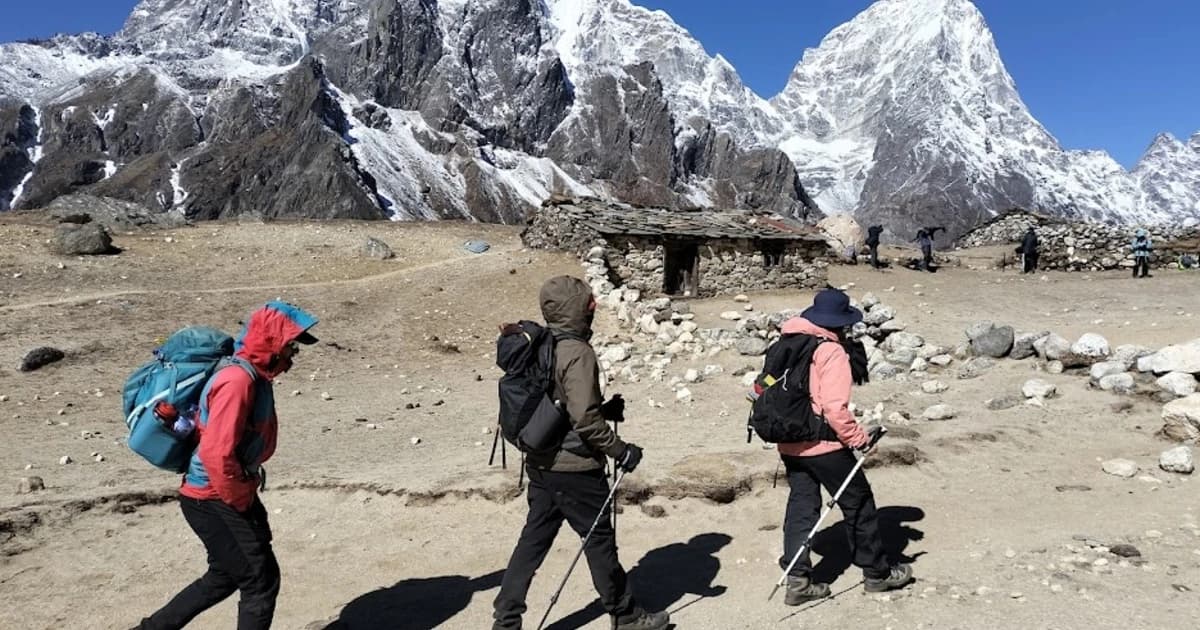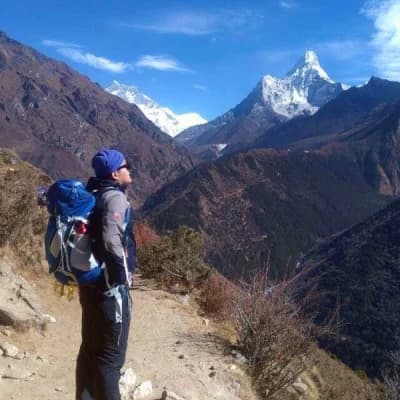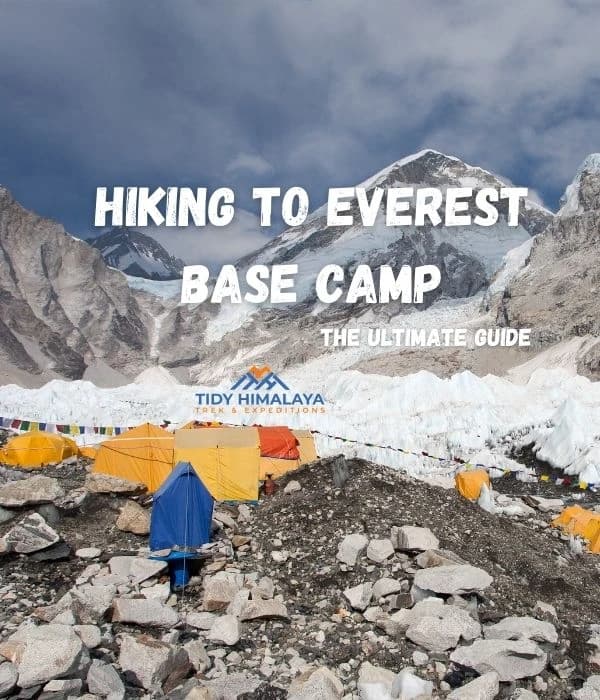Everest Base Camp trek as a beginner might sound like a far-fetched idea, but it's not unheard of. Many trekkers have conquered the Everest base camp trek on their first try.
You can too, so lace up your boots because we have some Tips and Tricks for the EBC trek for beginners.
Can Beginners Do the Everest Base Camp Trek?
Definitely. Each year Everest region welcomes tens, if not thousands trekkers. Some part there ways to Pikey Peak or Gokyo Lake while others continue to trek to EBC. In that crowd, some are experts in trekking, while a few can be a newbie; it’s not uncommon.
However, hiking to Everest Base Camp isn’t easy, especially for beginners. Walking 6-8 hours every day in the rugged terrain and with little to no transportation assistance requires a great fitness level.
Walking every day isn’t even a problem when you're acclimatized properly, Altitude can be the real headscratcher. With the Height of Everest Base Camp- 5364 meters (17594ft), altitude sickness may include nausea, tiredness, bodyache, headache, and other problems.

5 Tips and Tricks for the Beginner EBC hikers
As promised, here are the top five tips and Tricks for Everest Base Camp trekkers. For more details, check out the Last Minute Trekking Preparation Complete Guide.
Go Slow: Don’t Skip Acclimatization Day
The Mount Everest Base Camp trekking Distance depends on the EBC trekking route. The round trip from Lukla and back to it is approximately 130 km (81 miles). The altitude can be overwhelming, and the air starts getting thinner at a height of 5300 meters. This leads to Acute Mountain Sickness (AMS). Here’s How to Avoid Altitude Sickness.
- Follow a proper itinerary: rest your body during acclimatization day, especially at Namche Bazaar (3,440m) and Dingboche (4,410m).
- “Climb High, Sleep Low” it's the expert advice. Do short hikes above your sleeping altitude during rest days.
- If you feel uneasy or discomfort, rest immediately: Don’t ignore your health.
- Taking medications like Diamox (Acetazolamide) can help prevent AMS.
Hydration over Everything
The constant ups and downs at such a high altitude will drain all the water from your body. You will experience short breath, sweating, and dizziness. You may not find water bottles in shops, so feel free to as.k at the guesthouse or the teahouse. Here’s a simple tip to stay hydrated.
- Drink at least 3-4 liters of water daily. Take a sip even when you're not thirsty.
- Water bottles are expensive, so carry a filter/reusable bottle and water purification tablets every time.
- Avoid too much caffeine or alcohol on the trek — both can dehydrate you.
- Add electrolytes to your water for energy and recovery.
Focus on Physical Fitness.
Trekking for weeks in the blisteringly cold Himalaya region requires both physical and mental preparation. You will face cold mornings, muscle soreness, and fatigue every day. Strengthen your mental endurance to face the challenges.
Only a prepared body can enjoy the trek to its fullest. You need to train your body not only for Everest Climbing but also for trekking. Here are some Training guides for the EBC trek.
- Cardio: at least 30 minutes of jogging, cycling, running, or swimming.
- Strength Training: Core exercise, which includes Squats and lunges.
- Endurance: Long walks with heavy backpacks to mimic the path of the EBC trek
Note: Here are the tips on how to train for the Everest Base Camp ( EBC ) trek
Pack Light but Smartly
Your backpack could be your best friend or your greatest burden during the EBC trek. Beginners might not Know What to pack for the Everest Base Camp Trek. So, they tend to overdo it. But the key is for smart backpacks is to carry only what you need. Here is some of the necessary packing list for the EBC trek as a beginner.
- Proper hiking boots: Waterproof, ankle-supporting, and broken-in.
- Thermal layers: Weather changes fast. Mornings and nights are freezing, even in spring or autumn.
- Down jacket: Essential for higher altitudes.
- Woolen hat, gloves, neck buff, and sunglasses for protection against cold and UV rays.
- Trekking poles: Great for stability and reducing knee strain.
- Toiletries and basic medications (for headaches, diarrhea, colds, etc.)

Carry your Permits and documents.
Nepal Trekking is simple, but you need to acquire the necessary trekking permits according to the destination. They are necessary for you to qualify as a trekkers. In most cases, we will help you obtain your permits, but the fees are your responsibility.
Permits are checked at various points during the trekking period, so hold on to them everywhere you go. Have multiple copies of it for extra precautions.
Sagarmath National Park Permit
It's a mandatory permit, no matter the country, sex, or age. It can be acquired from Kathmandu at the Nepal Tourism Board Office or from Sagarmatha National Park itself. However, the permit fee might vary as on the country. It can cost approximately $30 for foreigners.
Khumbu Pasang Lhamu Rural Municipality Permit
This permit is much like the Sagarmatha National Park permit, but it's not available in Kathmandu. We will acquire it during the trek in Lukla or Monjo for approximately $20.
Final Thought
A beginner, Trekking in Nepal, even to the world's highest mountain, is doable. With the proper tips and tricks, like great health and fitness, a collection of necessary documents, and adequate rest at the acclimatization spot, you can successfully trek to EBC.


.webp&w=1200&q=75&dpl=dpl_2PwU5ZDv8uoJ3KrzEVbz8N547HgX)
.webp&w=1200&q=75&dpl=dpl_2PwU5ZDv8uoJ3KrzEVbz8N547HgX)
